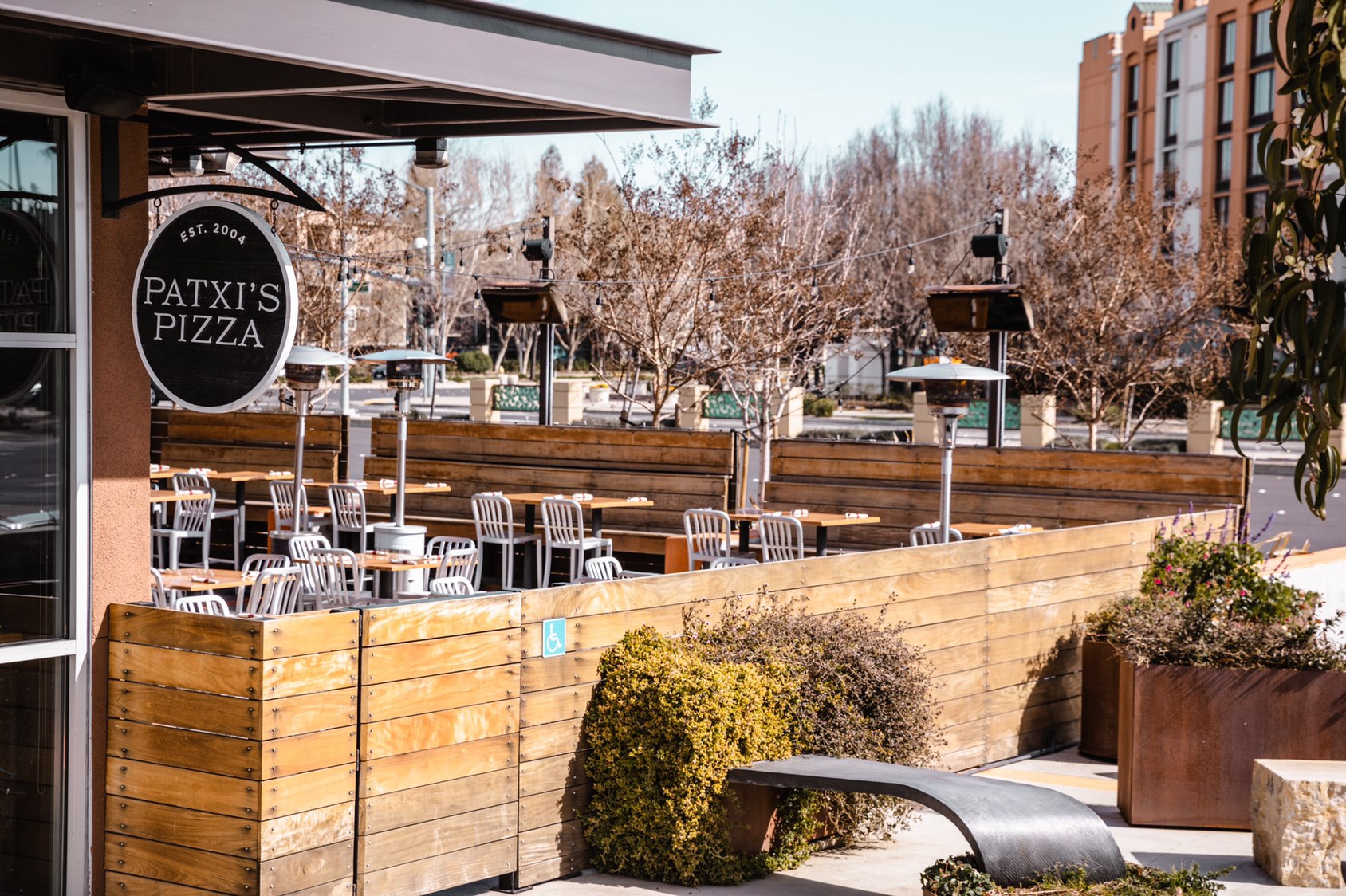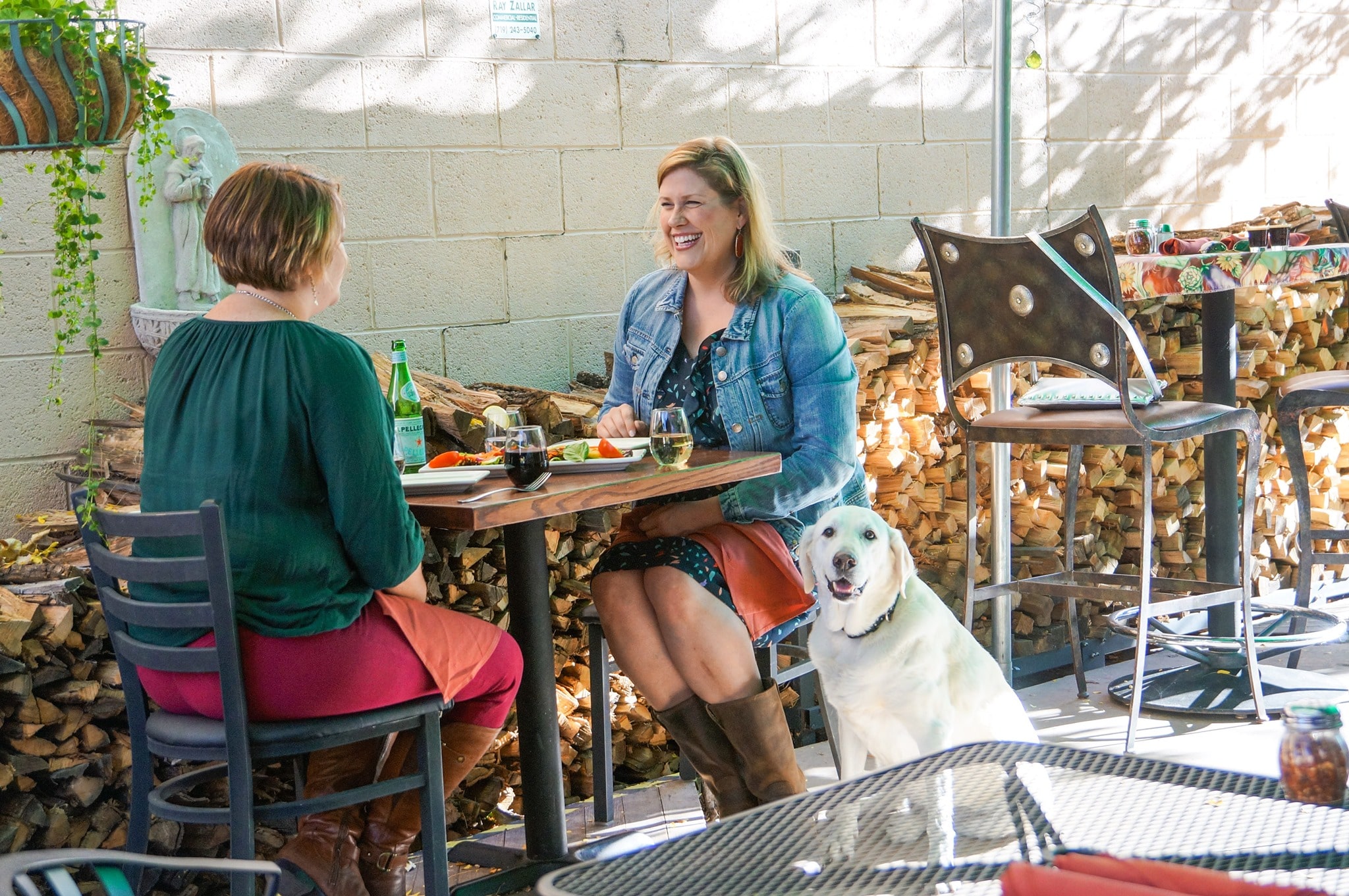As many restaurants struggle to make money under pandemic-related restrictions on dine-in capacity, cities around the country are taking steps to make it easier to move dining outdoors. And that means now could be the time to take a second look at your pizzeria’s outdoor dining facilities and consider how to improve the experience.
As the Wisconsin State Journal reported in late May, Madison, Wisconsin Mayor Satya Rhodes-Conway has issued a citywide emergency order that temporarily allows restaurants to expand their outdoor dining facilities, spreading them out onto public sidewalks, on-street parking spaces and privately owned parking lots. The city is also looking at closing some streets next to Capital Square to give restaurateurs additional space for serving their customers in the great outdoors.
Milwaukee is another Wisconsin city that’s considering street closures to make room for alfresco dining. Additionally, Minneapolis Mayor Tim Walz recently signed an executive order that has allowed restaurants and bars to offer outdoor dining. And city officials in Cleveland Heights, Ohio, are mulling possibilities for expanded outdoor dining as well, reports Cleveland.com.
Stuck inside since March, many customers are now more apt to flock to alfresco dining areas when the weather permits, which, depending on your location, could be seasonal or year-round. With that in mind, we’re revisiting a PMQ story from 2016 to offer tips for overcoming any challenges you might face in expanding outdoor dining at your pizzeria.
Breaking Out
According to a business analysis conducted in 2013 by VSAG, an initial investment of $200,000 in an outdoor dining space can result in $500,000 in sales and a gross profit of 65 percent. “In most cases, you don’t pay rent on patios, so that’s free space to add more seating—you’d be crazy to not take advantage of that, since more seating usually means more sales,” says Bill Freeman, chief executive officer of Patxi’s Pizza, based in Sausalito, California. “For temperate climates, great outdoor seating is practically a requirement; in our Denver-area restaurants, there will be a waiting list for outdoor seats when the weather gets nice.”
Dave Brackett, proprietor of Pizzeria Rustica in Colorado Springs, Colorado, similarly found that, with a climate boasting 330 days of sunshine annually, a patio ramps up sales seven months of the year. He opens the area at Pizzeria Rustica from April to October. And with only 42 chairs inside his restaurant, his alleyway patio seats 60, more than doubling capacity. “We pay a couple of bucks per square foot for the patio, as opposed to $50 for indoors,” he says. “The patio generates a good portion of our business, since we’re located in a tourist area—about 50% of business four months out of the year.”

The climate in San Antonio makes outdoor dining a necessity at Urban Bricks, but the patio is designed to create a truly memorable experience.
Outdoor dining adds the intangible benefit of improving customer satisfaction. “Being based in Texas, we’re used to beautiful, sunny days, when our customers enjoy time outside, making an outdoor patio a necessity,” says Sammy Aldeeb, owner and franchisor for Urban Bricks Pizza in San Antonio, Texas. “When building out the look and feel, it was imperative that this would be a restaurant people visit not only for the food, but for the experience.”
Urban Bricks takes full advantage of its outdoor spaces for both dining and special events, hosting live music on the first and third Thursdays of the month and holding dog-friendly events, such as Dogs Night Out and Yappy Hours, where the pizzeria partners with local nonprofits for pet adoptions and hosts fundraisers for nearby businesses and communities. Pet owners and their pooches also flock to Pizzeria Rustica’s patio, a pet-friendly haven where the doggies are just as well taken care of as their owners; servers even provide water dishes and treats (dubbed “puppy antipasto”) for their four-legged patrons.
Spacing Out
Creating a welcoming patio is a must to maximize your space, but costs can quickly accumulate. Consider asking your landlord to assist with any changes that improve the property—including permanent outdoor trash receptacles and a fence around the area for seating.
Meanwhile, other purchases can help improve the outdoor experience, such as decorative corded light strands and umbrellas, which provide a warm and welcoming ambience for the space while making it more visible from the road. Adding climate control measures—such as umbrellas, fans and heating lamps—allow your patio to be used during sun-laden days and cooler nights alike. “At our flagship store, the outdoor patio space is covered by a roof, and at our second location we have two outdoor seating areas, one covered by the roof and the other (separate from the restaurant) with umbrellas,” Aldeeb says. “In our opinion, a roof or awning is the best option.”
Urban Bricks also installed an oversize fan to offer relief in hot Texas summers, as well as built-in gas heaters to warm up the area on cooler fall or winter evenings. Decor was kept relatively simple, with only a couple of TVs and brushed-chrome tables and chairs.
Brackett kept his costs in check at Pizzeria Rustica by purchasing inexpensive black metal patio furniture from area suppliers. “It’s reasonably comfortable—we have [very durable] pillows available on request. We’re going on nine years with our original furniture. It’s easy to move around and easy to touch up paint, which we do each year,” he explains.
Brackett also places a 20’-by-20’ tent in the middle of the patio, supplemented with large umbrellas from his beverage distributors. During cooler weather, Pizzeria Rustica regulates temperatures with seven patio heaters, including one with a flame for ambience. A large fountain, dozens of potted and hanging plants (including an herb garden that staff members pick from for cooking), and the wood for its wood-fired oven are on prominent display to add to the patio’s charm.

Stepping Out
In addition to decor needs, patios require manpower to ensure proper staffing and flow. “Once you have your location and have found good seating solutions and made sure you’re compliant with any applicable zoning or alcohol laws, the next challenge is staffing: Is there a good flow for servers to get in and out? Do you have enough staff?” Freeman notes. “Service is key. You want to make sure your guests sitting outside are as well taken care of as your indoor guests, so you need to have enough staff that are well-trained to check on outside tables.”
Pizzeria Rustica dedicates two to three servers and a hostess for the outdoor area, while an outdoor bussing station allows for seamless cleanup. “We didn’t want staff taking dirty dishes in the same door customers are exiting to sit outside,” Brackett explains. “We also have a space for water and tea, plus a beer cooler, which limits running back and forth. All we bring from inside is the food.”
Patios may pose security challenges, too. Brackett had to enclose the area with a fence so people wouldn’t “wander in” from the street or leave the premises with alcohol. “We need to lock up the beer cooler and furniture to prevent theft, since we don’t have the space to take it inside,” Brackett says. “And we installed proper lighting and security cameras to monitor the area.”
Overall, patios may require extra staff and vigilance, but they can be a true boon for business. “If you have the space, it’s probably a good idea to add outdoor dining,” Freeman says. “When the weather is nice, outdoor seating is something many of your guests will be looking for; if you don’t have it, you will lose guests to your competitors.”
Tracy Morin is PMQ’s senior copy editor.













